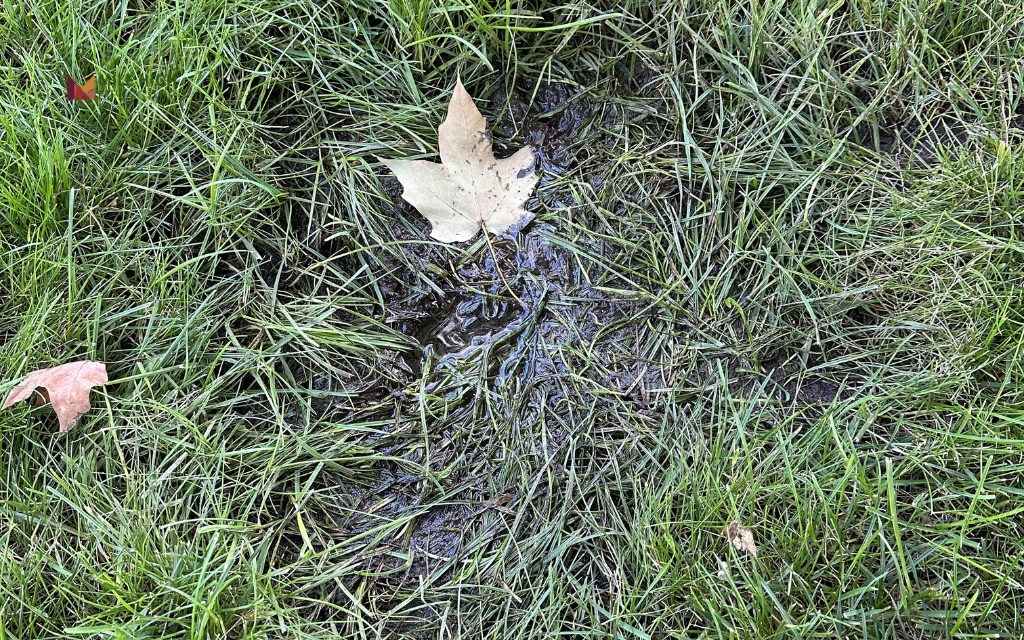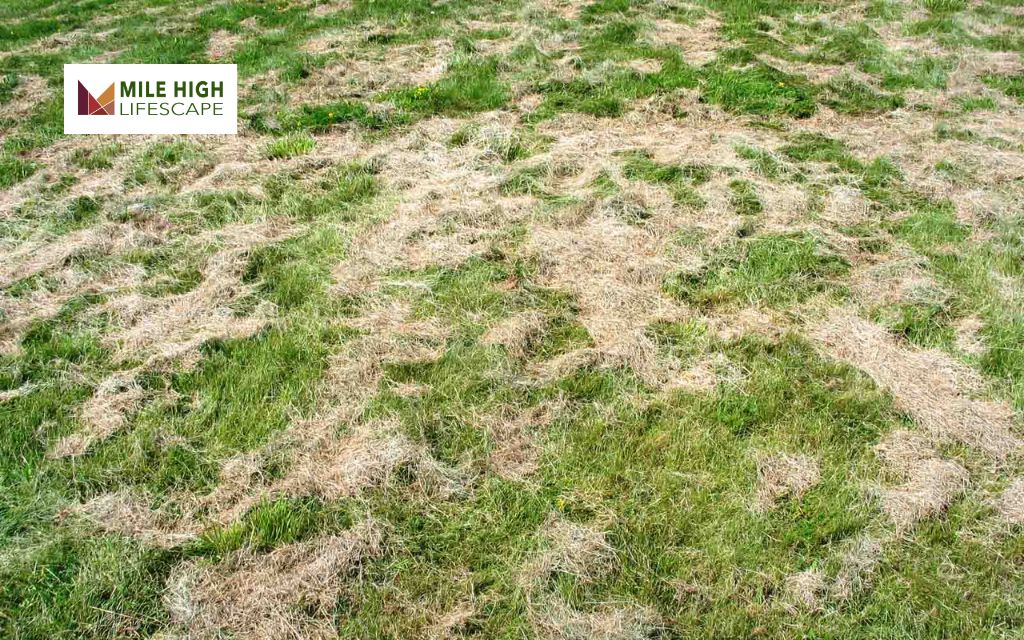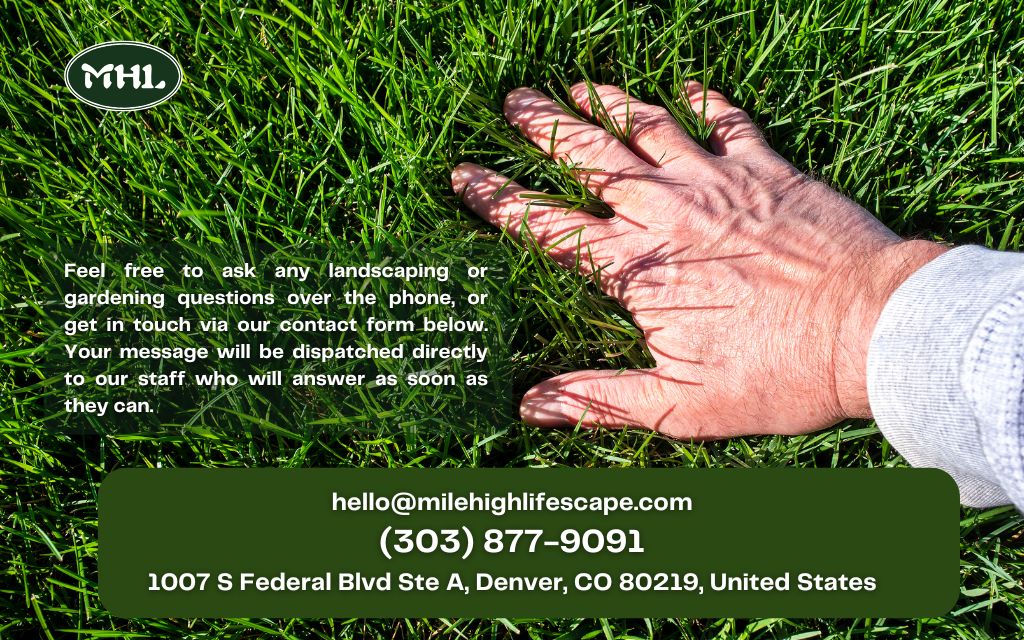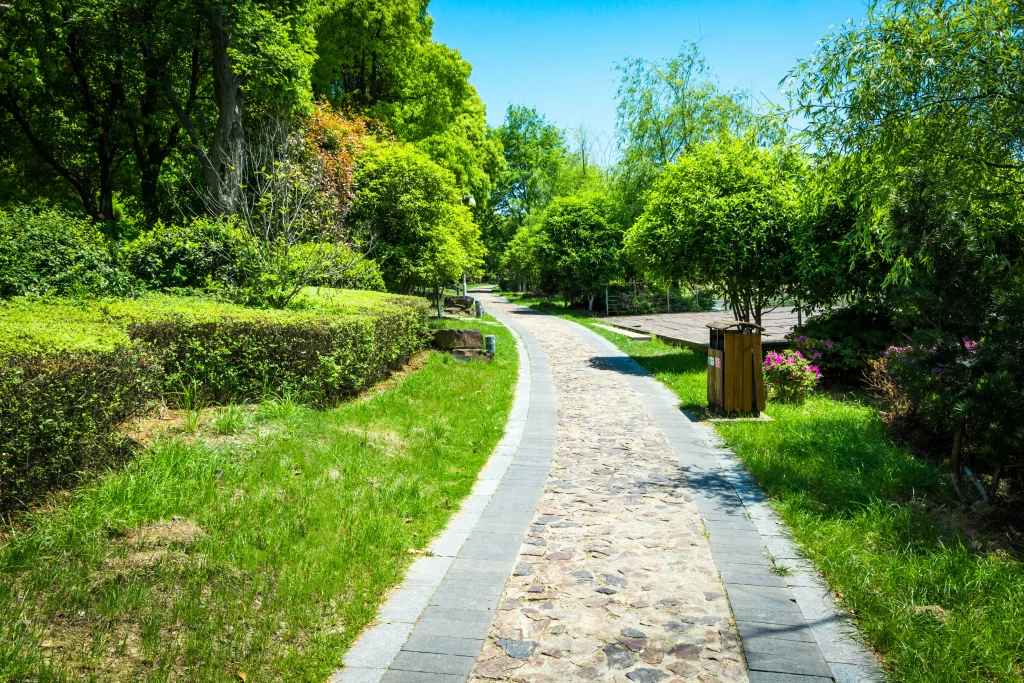Soft spots in yard present more than just an unsightly nuisance – they create hazardous conditions that compromise both safety and lawn integrity. These spongy, unstable areas form when the ground beneath your feet gives way, creating depressions that collect water and destabilize your landscape.
This comprehensive guide equips you with the knowledge to identify the underlying causes of soft spots in yard and implement effective solutions. We’ll explore the various factors that create unstable ground conditions and provide both DIY remedies and professional approaches to restore your lawn’s firmness and functionality.
What Are Soft Spots in Yard?
Soft spots in yards are specific areas where the ground feels spongy, unstable, or sinks underfoot when walked upon, unlike the firm texture of healthy lawn areas. These depressions occur when the soil structure beneath your grass weakens and loses its stability, creating potentially hazardous conditions that worsen over time.

Several factors contribute to this deterioration, including water saturation, underground voids, soil composition changes, or organic material decomposition. The soil loses its structural integrity and compacts or collapses, creating the characteristic sponginess homeowners notice while walking across their property.
Signs of soft spots in yard include:
- Noticeable depressions or sunken areas across the lawn surface
- Water accumulation that persists long after rainfall or irrigation
- Patches where grass grows poorly or appears stressed despite adequate care
- A distinctive bouncy or spongy feeling when walking across affected areas
- Unusually lush or dark green grass in isolated spots (indicating excess moisture)
- Visible soil cracks during dry periods that turn spongy after watering
What Causes of Soft Spots in Yard?
Poor Drainage and Excess Moisture
Inadequate drainage ranks as the primary culprit behind soft spots in lawns. When water cannot properly flow away from your property, it saturates the soil, weakening its structure and creating the spongy texture homeowners notice. This oversaturation causes soil particles to separate, reducing the ground’s natural firmness and creating the perfect conditions for soft spots to develop.

Multiple factors contribute to drainage problems in your yard. Overzealous irrigation from automatic sprinkler systems frequently delivers more water than the soil can effectively absorb, particularly in clay-heavy Colorado soils. Natural weather patterns also play a significant role, with Denver’s occasional intense rainstorms overwhelming the soil’s absorption capacity. Additionally, improper yard grading prevents water from flowing away from your property, creating low points where moisture collects and remains. These conditions worsen in yards with high clay content soil, which retains water rather than allowing it to percolate downward.
Burrowing Animals & Grubs
Underground grubs activity creates networks of tunnels and chambers that eventually collapse, forming noticeable soft spots across your lawn. Common Colorado culprits include voles, pocket gophers, and moles that construct extensive underground pathways while searching for food. These tunnels remove supporting soil and create voids that destabilize the ground above.
Evidence of pest-related soft spots includes:
- Small entrance or exit holes measuring ½ to 2 inches in diameter
- Raised ridges or visible tunneling patterns beneath the grass surface
- Dead grass patches along tunnel routes where roots have been damaged
- Soft areas that appear in lines or patterns rather than isolated spots
- Fresh dirt mounds near tunnel entrances, particularly after rainfall
Decomposing Organic Matter
Buried organic material gradually breaks down beneath your lawn, creating voids that manifest as soft spots. This process commonly occurs where former trees stood, leaving root systems to decompose underground. Similarly, construction debris like wood scraps or biodegradable materials buried during home construction eventually rot, leaving empty pockets that cause the ground above to sink.

Soil Erosion and Compaction
Soil displacement through erosion or compression creates perfect conditions for soft spots to develop. Heavy foot traffic from family activities, pet play areas, or regular pathways compresses soil particles, decreasing drainage capacity and creating depressions. Similarly, water runoff after heavy rains washes away topsoil, leaving uneven terrain prone to collecting moisture.
Septic System or Utility Line Issues
Underground infrastructure problems represent the most serious potential cause of soft spots. Leaking water lines, sewer connections, or failing septic components release moisture into the surrounding soil, creating saturated zones that manifest as soft spots. These issues require prompt professional attention as they can damage your home’s foundation and contaminate groundwater.
How to Fix Soft Spots in Yard?
Step 1: Identify the Root Cause
Accurate diagnosis forms the foundation of effective soft spot remediation. Begin by examining the affected areas thoroughly to determine what’s creating the unstable ground conditions. Start with a simple test by pushing a screwdriver or garden stake into the soft area to gauge how deep the issue extends. For more information, dig a small test hole (approximately 6 inches across and 8 inches deep) within the soft area to examine soil composition, moisture levels, and potential organic material.
Observe your yard’s drainage patterns during rainfall, noting where water collects and how long it remains. Check for signs of pest activity by looking for tunnels, holes, or mounds near soft areas. If the problem seems extensive or challenging to diagnose accurately, professional assessment provides the most reliable path forward.
Step 2: Improve Drainage
Enhancing water movement through your soil provides a fundamental solution for moisture-related soft spots. Address drainage issues through multiple complementary approaches based on your specific yard conditions and the severity of the problem.
Core aeration solves moderate drainage problems by removing small soil plugs throughout your lawn, creating pathways for water and air to penetrate compacted soil. Follow aeration with dethatching to remove the layer of dead grass material that can block water penetration. For more persistent issues, incorporate coarse sand into the topsoil to improve permeability, particularly in Colorado’s clay-heavy soils.
Implement these drainage solutions based on severity:
- For minor issues: Core aeration twice yearly (spring and fall) combined with dethatching
- For moderate problems: Install shallow drainage trenches filled with gravel in affected areas
- For severe conditions: Construct proper French drains that channel water away from your property
- For consistent problems: Consider regrading portions of your yard to create proper water flow away from structures and prevent pooling
Step 3: Remove Burrowing Grubs
Eliminating underground grubs activity requires a strategic approach that addresses both current infestations and prevents future invasions. Begin with humane trapping methods designed for the specific pest you’ve identified. For moles and voles, specialized traps placed in active tunnels provide effective control without chemicals. Underground sonic repellent devices create an inhospitable environment for burrowing animals without harming them.
For lawns affected by grubs that attract larger pests, apply beneficial nematodes – microscopic organisms that naturally control grub populations without harming your lawn or beneficial insects. Create barriers around garden beds and vulnerable areas using buried hardware cloth extending at least 24 inches deep to prevent new tunneling activity.
Maintain your lawn diligently to deter pests:
- Mow regularly at the proper height for your grass type (typically 2.5-3.5 inches for Colorado lawns)
- Remove fallen fruit, seeds, and nuts that attract foraging animals
- Keep mulch away from direct contact with tree trunks and shrubs where pests nest
- Apply cedar mulch in garden beds, which naturally repels many burrowing creatures
Step 4: Fill in Voids and Level the Ground
Restore stability to soft areas by properly filling and compacting affected sections. Begin by removing the grass layer from the soft spot, setting it aside if still healthy or discarding if damaged. Excavate the soft, unstable soil until you reach firm ground, typically 4-12 inches deep depending on the severity of the problem.
Create a proper fill mixture by combining topsoil with coarse sand in a 70/30 ratio, which provides stability while maintaining drainage. Add the mixture in 2-inch layers, thoroughly compacting each layer before adding the next. This methodical approach prevents future settling. Continue until the filled area sits slightly higher than the surrounding lawn, allowing for minimal settling over time.
Complete the restoration process:
- Moisten the filled area lightly without saturating
- Apply a quality grass seed mixture appropriate for your Colorado lawn
- Cover the seed with a thin layer of topsoil or compost (¼ inch)
- Protect the area from foot traffic for 4-6 weeks while grass establishes
- Water lightly and frequently until new grass reaches 2 inches in height
Step 5: Prevent Future Soft Spots
Implement proactive maintenance practices to preserve your lawn’s stability and prevent soft spots from returning. Establish a consistent lawn care routine that promotes healthy grass growth while maintaining proper soil structure beneath.
Core aeration performed bi-annually breaks up compacted soil and improves drainage throughout your yard. Follow a measured irrigation schedule that provides adequate moisture without oversaturating the soil. For Colorado lawns, this typically means deep, infrequent watering (about 1-1.5 inches per week) rather than daily shallow irrigation. Adjust your watering schedule seasonally, reducing frequency during cooler months and when rainfall provides natural moisture.
Monitor your lawn regularly for early warning signs:
- Check for areas where water pools after irrigation or rainfall
- Look for changes in grass color or vigor that might indicate drainage issues
- Inspect your property after storms for signs of erosion or soil displacement
- Address minor soft spots immediately before they expand into larger problems
- Maintain optimal soil health through annual soil testing and appropriate amendments
When to Call a Professional for Help?
While many soft spot issues respond well to DIY approaches, certain situations demand professional expertise. Extensive soft areas covering significant portions of your yard often indicate serious underlying problems that require specialized equipment and knowledge to address properly. Similarly, recurring soft spots that return despite your remediation efforts suggest complex drainage issues that benefit from professional assessment.
Mile High Lifescape provides comprehensive solutions for challenging lawn stability issues. Our team conducts thorough property evaluations to identify underlying causes and implements targeted remediation strategies. For properties with severe grading problems, we design and install proper drainage systems that permanently resolve water management issues. Our experts also address complex issues involving utility lines, septic systems, or extensive pest damage with the appropriate equipment and techniques.

Conclusion
Soft spots in your yard require prompt attention to prevent escalation into more significant lawn problems. By understanding the various causes – from drainage issues and pest activity to decomposing matter and soil erosion – you can implement appropriate solutions that restore your lawn’s stability and appearance. The key to successful remediation lies in accurate diagnosis followed by targeted treatment that addresses the specific underlying cause.
Proactive lawn maintenance provides the most effective long-term strategy for preventing soft spots. Regular aeration, proper watering practices, and vigilant monitoring for early warning signs help maintain optimal soil structure and drainage. By incorporating these practices into your routine lawn care, you create resilient outdoor spaces that resist the conditions leading to soft, unstable areas.
Mile High Lifescape offers expert assessment and customized solutions for homeowners facing persistent or complex soft spot issues. With nearly two decades of experience serving Denver and surrounding communities, our team delivers professional remediation that restores your lawn’s functionality, safety, and visual appeal. Contact us today for a free yard evaluation and discover how our expertise can transform your outdoor space into the stable, beautiful landscape you deserve.
Frequently Asked Questions (FAQs)
How do I know if my yard has a drainage problem?
Water pooling that persists more than 24 hours after rainfall or irrigation indicates drainage issues. Look for soggy soil, areas where grass grows poorly despite adequate care, and moss or algae growth. In Colorado’s climate, properly draining soil should become merely damp (not soggy) within several hours after average rainfall. If water remains visible on the surface, your yard likely needs drainage improvements.
Can I fix soft spots in my yard without digging?
Minor soft spots can sometimes be remedied without extensive excavation through techniques like core aeration and topdressing with sand-soil mixtures. However, these surface-level approaches only work for shallow issues caused by mild compaction or thatch buildup. Deeper problems involving decomposing material, severe drainage issues, or pest tunnels require excavation to properly address the underlying cause and prevent recurrence.
Are soft spots dangerous for my lawn’s health?
Yes, soft spots significantly compromise lawn health by creating inconsistent growing conditions. The excess moisture in these areas promotes fungal diseases that damage grass roots, while the unstable soil structure prevents proper root development. Additionally, these areas often become compacted as they dry, further stressing grass plants. Without correction, soft spots typically expand over time, affecting larger portions of your lawn and requiring more extensive remediation.
How long does it take for grass to grow back after fixing a soft spot?
With proper preparation and optimal conditions, grass seed germination occurs within 7-10 days, with visible establishment in 2-3 weeks. Complete lawn restoration typically requires 4-6 weeks during the growing season. Spring (April-May) and early fall (September) provide ideal conditions for grass establishment in Colorado. Summer repairs require additional watering attention, while winter repairs should wait until soil temperatures warm consistently above 50°F.
Will heavy rain create new soft spots even after fixing them?
Properly remediated areas should resist soft spot formation even during heavy rainfall, provided you’ve addressed the underlying cause and implemented proper drainage solutions. However, extreme weather events can sometimes overwhelm even well-designed systems. To protect against this, ensure your yard maintains positive grading away from structures, incorporate appropriate drainage features, and use grass varieties suited to Colorado’s climate that develop strong root systems capable of stabilizing soil during heavy precipitation
